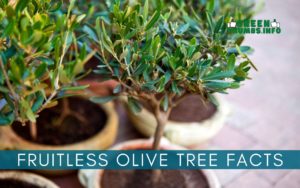Fruit trees not only add a touch of beauty to your garden, but they can also provide delicious, healthy snacks right from your backyard! And while many fruit trees need full sun exposure to thrive, there are a handful of varieties that prefer partial shade.
In this article, we’ll explore 11 fruit trees that grow best in partial shade and the importance of giving them the right amount of light.
So, if you’re looking for a little more variety in your garden fruit selection, you’ve come to the right place! Let’s get started.
11 Fruit Trees that Prefer to Grow in Partial Shade
1. Peach Tree
The peach tree is an ideal choice for growing in partial shade, as it produces sweet and juicy fruit without needing direct sunlight. It’s important to note that peaches require a long, warm growing season so they must be planted in a spot where temperatures don’t dip below freezing in the winter.
2. Cherry Tree
Cherry trees are another popular choice for the backyard orchard, and they too require partial shade to thrive. A cherry tree is a great option if you’re looking for an easy-care fruit tree as it’s relatively disease-free and produces sweet, juicy fruit without much maintenance.
3. Nectarine Tree
The nectarine tree is the same species as the peach tree, but its fruit has smooth skin instead of a fuzzy one. Nectarines are low-maintenance trees that prefer to be planted in partial shade. Nectarine trees won’t take up as much space as other fruit trees, making them a great choice for small gardens.
4. Apricot Tree
Apricots are another favorite when it comes to backyard orchards and they too prefer partial shade. They need well-draining soil and require less pruning than some other varieties of fruit trees, so they’re relatively easy to care for.
5. Plum Tree
Plum trees are a great choice if you’re looking for a fruit tree that produces sweet, juicy plums but doesn’t require full sun to thrive. They can be grown in partial shade and need well-draining soil to produce the best harvests.
6. Apple Tree
Apple trees are some of the most popular fruit trees for backyard orchards, and they too can be grown in partial shade. Apple trees don’t require full sun to produce sweet, juicy apples, but they do need plenty of water and well-draining soil to thrive.
7. Almond Tree
Almond trees are a great choice for those looking for a fruit tree that produces tasty nuts. They can be grown in partial shade and prefer well-draining soil and are very drought resistant. Almond trees do not need regular pruning making them a great low-maintenance option.
8. Fig Tree
Figs are a popular fruit choice for backyard orchards, and they prefer to be grown in partial shade. Figs can be planted outdoors in containers and moved around wherever the best light is available. They need plenty of water and well-draining soil to thrive and can produce sweet, delicious fruit with minimal effort.
9. Olive Tree
Olive trees are an ideal choice for gardeners looking for a unique fruit tree that produces tasty olives. Olives can withstand full sun and arid conditions, however, they can also be grown in partial shade yet still produce an abundant harvest.
10. Pomegranate Tree
A pomegranate tree can be grown as a bush or small tree and can thrive in both full sun and partial shade. They need very little water and can tolerate most soil types, making them a great choice for gardeners looking for a low-maintenance fruit tree. The trees also produce beautiful flowers in the spring and they’re very drought-tolerant.
11. Citrus Tree
Citrus trees, such as oranges and lemons, can also be grown in partial shade. These trees need plenty of sunshine but they also require some shade to prevent the leaves from burning during hot summer days. Citrus trees need regular pruning in order to produce the best fruit harvests.
Conclusion
We hope this article has given you some new ideas for adding more variety to your backyard orchard!
As you can see, there are plenty of fruit trees that prefer to grow in partial shade and still produce an abundant harvest.
With the right care and maintenance, these fruit trees can provide you with delicious fruits for many years. So get out there and start planting!

